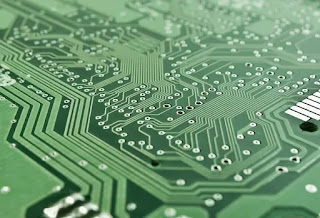Digital computing is linked to the representation of numbers. But before it was retained as statistics, there were mathematical ideas to achieve development goals. These ideas are based on concrete:
In the same email, the law of how many things, on a sort stick, is ultimately compared to a number, compared to a standard, considering reproduction in a different way. Method of, for example; For example, using 12-5 strings evenly distributed, 3-5-5 was a tool to use in three dimensions to emphasize the right angle.
The number
Initial integration
Main article: Last computer date 2400 BC-1949
See also: Computer history
This section contains important or very important information or importance to the subject.
The earliest instrument used for calculations is the Sumerian abacus, and people are thought to have been made in Babylon c. 2700-2300 BC The first type of its use was lines drawn in sandstone. Abaci, in the most modern design, is still used today as a statistical tool. It was the first known computer and the most advanced weapon system - one that guided Greek civilization by the 2000s.
In c. In 1050-771 BCE, a southern chariot was made in China. This was the first known way to use a differential gear, which was later used for analog computers. The Chinese invented the most widely used abacus around the second century, known as the Chinese abacus. [Beware]
In ancient India in the 5th century BCE, the Panini grammar wrote the Sanskrit grammar in 3959 orders, known as the orderly and skillful Ashtadhyai. Panini worked on metalworking, editing, and editing. [you guys]
In the third century BCE, Archimedes used mathematical models (such as Archimedes Pamimpest #mathematics) to calculate mathematical constraints, such as the amount of gravitational sand (sand entries) in the universe, which needed to be repeated. It was. Numbers (e.g., several).
Around 200 BCE the manufacture of gears made it possible to develop weapons in such a way that the shape of the wheels could match the position of the cosmos. Around 100 AD By that time, Alexandria's Hero described it as an odometer-like device capable of speed and accurate digital readings. But it was not until the 1600s that machine tools were developed to break down the computer.
Antikythera is believed to be the oldest known computer. He was made to study astronomy. It was found in 1901 on a ship of Antioch, near the Greek island of Antikythera, between Cathera and Crete, and was published in 100 BCE.
Analog devices were found over a thousand years in the ancient Muslim world and were designed by Muslim scientists, such as Abhay Rehan al-Birni, and Javir ibn Afla's Javir ibn Afla. According to Simon Singh, Islamic mathematicians have also made great strides in literature, for example, the development of cryptanalysis and the frequent analysis of alkyns. . An analog computer with software is viewed.
During the Middle Ages, many European intellectuals sought to develop analog computer equipment. Directed by Arabia and Scholastism, Majorcan philosopher Ramon Lull (1232–1315) devoted much of his life to describing and developing many sound machines, including simple and abstract wisdom, to the greatest extent possible. It can be creative. The machine was not actually built, because it was a rational idea to generate new information in systematic ways; Although he could do simple things, he still needed someone to translate the results. In addition, they did not have a few building blocks, and each machine had concrete plans. Despite this, Lull's work had a profound effect on Gottfried Leibniz (early 1800's), who went on to develop his ideas, and developed several statistical tools using them.
On the contrary, when John Napier discovered high prices in the early 1700s, a long period of time was followed by the makers and scientists in developing statistical tools. Above this special computational time can be seen in the engine contrast with the correct search engine (which was not fully developed, but was designed to be detailed), all by Charles Babbage. Analytical Engine combined ideas from its work and from others to create a device that, if designed as a design, has many characteristics similar to a modern computer. This item includes things like "memory" inside It can be changed. Also read. One of the main advantages that Babbage puts ahead of its equipment was that each part of the device was not isolated from any other machine, such as the latest computer equipment. This was a great change of mind; Previous toolkits have achieved a single goal, but they have been well integrated and re-engineered to create a new challenge. Babbage tools can be revisited to solve new problems by the introduction of new information, and can be applied to calculating the old based on the same instructions. Ada Lovelace took this idea further, developing a search engine system to integrate Bernoulli's numbers, which calls for more efficient integration. This is expected to be the first example of a true computer program, a series of instructions that follow the data until the program is completed. After Babbage, though unaware of its original work, in 1909, Percy Ludgate published only two major light-based computations in history.
Many analog reading models survived recently. A planmeter is a compact device, using distance as an analog output. By the 1980s, HVAC systems had used the air as an analog and steering wheel. Unlike most modern computers, analog computers are not interchangeable, and need to be manually modified (i.e., modified) to work from one problem to another. Analog computers were more advantageous than the first digital computers in the sense that they could be used to overcome complex problems using traditional analogs where the first attempts at digital computing were limited.
4
Smith Chart is a well known name.
Since computers were scarce during this time, responses were often not recorded as mobile, which could trigger responses to these problems, such as overcrowding and heat. To give.







